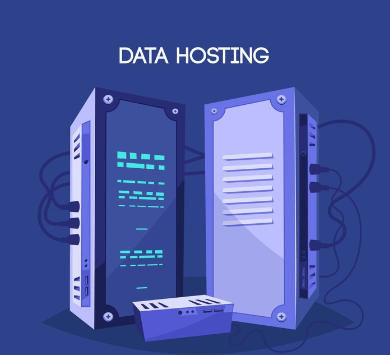Online Cloud Servers
In today’s digital landscape, the term “Online Cloud Server” has become ubiquitous. But what exactly does it entail, and why is it so crucial in modern computing? Let’s delve into the essence of Online Cloud Servers and explore their significance.
Defining Online Cloud Server
An Online Cloud Server refers to a virtualized server hosted and managed remotely by a cloud service provider. Unlike traditional physical servers, which are housed on-premises, cloud servers operate on a scalable infrastructure, accessible via the internet.
Importance of Online Cloud Servers
The importance of Online Cloud Servers stems from their ability to revolutionize the way businesses and individuals approach computing. By leveraging the cloud, organizations can enhance flexibility, scalability, and efficiency while reducing operational costs.
Understanding Online Cloud Servers
To fully grasp the concept of Online Cloud Servers, it’s essential to dissect their anatomy, functionality, and the myriad benefits they offer.
What is a Cloud Server?
At its core, a Cloud Server is a virtualized instance of a physical server deployed within a cloud computing environment. It operates independently, with its resources allocated from a pool of underlying physical servers.
How Online Cloud Servers Work
Online Cloud Servers operate on a distributed infrastructure, utilizing virtualization techniques to partition physical servers into multiple virtual machines (VMs). These VMs run isolated instances of operating systems and applications, providing users with on-demand access to computing resources.
Benefits of Using Online Cloud Servers
The benefits of Online Cloud Servers are manifold. They include scalability, allowing users to effortlessly scale resources up or down based on demand, flexibility, enabling access from anywhere with an internet connection, and redundancy, ensuring high availability and data resilience.
Choosing the Right Online Cloud Server Provider
Selecting the ideal Online Cloud Server provider is paramount to the success of your cloud endeavors. Here’s what you need to consider when making this critical decision.
Factors to Consider When Choosing a Provider
When evaluating potential providers, factors such as reliability, performance, security, compliance, and customer support should be meticulously assessed to align with your specific requirements and objectives.
Top Online Cloud Server Providers in the Market
Leading the charge in the realm of Online Cloud Servers are industry giants like Amazon Web Services (AWS), Microsoft Azure, Google Cloud Platform (GCP), and IBM Cloud. Each offers a comprehensive suite of services tailored to diverse business needs.
Pricing Models and Plans Offered by Providers
Providers offer various pricing models, including pay-as-you-go, subscription-based, and reserved instances, with pricing structures varying based on resource utilization, storage, data transfer, and additional features.
Setting Up Your Online Cloud Server
Embarking on the journey of setting up your Online Cloud Server entails a series of meticulous steps, configurations, and security measures.
Steps to Set Up an Online Cloud Server
The setup process typically involves selecting an instance type, configuring network settings, deploying an operating system, installing required software, and optimizing performance parameters.
Configuration Options and Customizations
Online Cloud Servers offer a plethora of configuration options, including CPU, memory, storage, and networking specifications, allowing users to tailor resources to meet specific workload demands.
Security Measures to Implement
Security should be a top priority when setting up an Online Cloud Server. Implementing robust security measures, such as firewalls, encryption, multi-factor authentication, and regular audits, is imperative to safeguard sensitive data and mitigate potential threats.
Managing Your Online Cloud Server
Efficiently managing an Online Cloud Server entails continuous monitoring, resource optimization, and prompt resolution of issues as they arise.
Monitoring Performance and Resource Usage
Utilizing monitoring tools and dashboards enables real-time tracking of performance metrics, resource utilization, and system health, facilitating proactive intervention and optimization.
Scaling Resources as Needed
Scalability is one of the hallmark features of Online Cloud Servers. Leveraging auto-scaling capabilities allows resources to dynamically adjust based on workload fluctuations, ensuring optimal performance and cost-efficiency.
Troubleshooting Common Issues
Prompt identification and resolution of common issues, such as network latency, application errors, and performance bottlenecks, are crucial to maintaining uptime and user satisfaction.
Optimizing Performance and Efficiency
Maximizing the performance and efficiency of your Online Cloud Server involves implementing best practices and leveraging automation tools.
Best Practices for Optimizing Performance
Optimization techniques include workload balancing, caching, load testing, and fine-tuning resource allocation to achieve optimal performance and responsiveness.
Tips for Maximizing Efficiency and Cost Savings
To minimize costs and maximize efficiency, consider rightsizing instances, leveraging spot instances, optimizing storage utilization, and adopting serverless architectures where applicable.
Implementing Automation and Orchestration Tools
Automation and orchestration tools, such as Terraform, Ansible, and Kubernetes, streamline deployment, configuration management, and resource provisioning, enhancing agility and scalability.
Data Backup and Disaster Recovery
Data backup and disaster recovery are paramount in safeguarding against data loss and ensuring business continuity in the event of unforeseen circumstances.
Importance of Data Backup and Disaster Recovery
Data backup and disaster recovery strategies mitigate the impact of data breaches, hardware failures, natural disasters, and human error, preserving data integrity and minimizing downtime.
Strategies for Backup and Recovery in the Cloud
Employing techniques such as regular backups, offsite replication, versioning, and disaster recovery testing ensures resilience and rapid recovery in the face of adversity.
Testing Your Backup and Recovery Plans Regularly
Regular testing and validation of backup and recovery plans are essential to identify potential vulnerabilities, assess recovery times, and validate data integrity.
Security Considerations for Online Cloud Servers
Securing your Online Cloud Server infrastructure is paramount to protect against evolving threats and safeguard sensitive information.
Common Security Threats and Risks
Threats such as data breaches, malware, DDoS attacks, and insider threats pose significant risks to cloud environments, necessitating robust security measures and proactive threat detection.
Best Practices for Securing Your Cloud Server
Implementing a multi-layered security approach, including network segmentation, encryption, intrusion detection systems, and regular audits, fortifies defenses and mitigates vulnerabilities.
Implementing Encryption and Access Controls
Encrypting data at rest and in transit, enforcing least privilege access controls, and implementing strong authentication mechanisms bolster security posture and ensure data confidentiality.
Future Trends in Online Cloud Server Technology
The landscape of Online Cloud Servers continues to evolve, driven by emerging technologies and shifting paradigms in cloud computing.
Emerging Technologies Impacting Online Cloud Servers
Technologies such as edge computing, serverless architectures, containerization, and AI-driven automation are poised to reshape the landscape of Online Cloud Servers, enabling greater agility, scalability, and efficiency.
Predictions for the Future of Cloud Computing
The future of cloud computing is characterized by hybrid and multi-cloud deployments, edge computing proliferation, AI-driven insights, and decentralized architectures, revolutionizing how businesses leverage technology to innovate and compete.
How Online Cloud Servers Will Evolve
Online Cloud Servers will evolve to become more intelligent, autonomous, and resilient, leveraging advanced analytics, AI-driven automation, and decentralized architectures to deliver unparalleled performance, security, and scalability.
Conclusion
In conclusion, Online Cloud Servers represent a paradigm shift in computing, offering unparalleled flexibility, scalability, and efficiency. By embracing cloud technologies and adopting best practices, organizations can unlock the full potential of Online Cloud Servers and propel their digital transformation journey forward.






